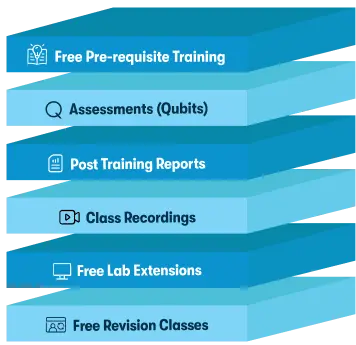We're open through the holidays to support your upskilling goals — Which training do you want to book?
We're open through the holidays to support your upskilling goals — Which training do you want to book?
Unable to find what you're searching for?
We're here to help you find itCassandra Course Overview
The Cassandra course offers a comprehensive dive into the world of distributed databases, specifically focusing on Apache Cassandra. This course is designed to equip learners with the knowledge and skills necessary to understand, manage, and effectively use Cassandra for scalable, high-availability applications.
Starting with Module 1, students are introduced to the basics of Cassandra, including its purpose, the CAP theorem, cluster architecture, and eventual consistency. This foundation is critical for understanding Cassandra's system requirements and setting up a lab environment for hands-on learning.
As the course progresses through Module 2 to Module 11, learners will gain a deep understanding of Cassandra's distributed nature, data modeling, and the intricacies of its data distribution mechanisms such as snitches, gossip, and virtual nodes. Practical skills in installation, configuration, and communicating with Cassandra using CQLSH are also developed.
Module 6 and beyond provide advanced knowledge, showcasing how to create applications with a Cassandra backend, perform data updates and deletions, manage a multinode cluster, and conduct monitoring and maintenance. Backup, restore, and performance tuning are covered in-depth to ensure that learners are well-prepared to handle real-world scenarios.
Throughout the course, key concepts such as secondary indexes, tombstones, hinted handoff, and data replication strategies are addressed, ensuring that students are ready to tackle Cassandra's complexities in production environments. This course not only imparts theoretical knowledge but also emphasizes practical application, making it a valuable asset for anyone looking to specialize in Cassandra.
Purchase This Course
USD
View Fees Breakdown
| Course Fee | 1,800 |
|
Total Fees |
1,800 (USD) |
USD
View Fees Breakdown
| Course Fee | 1,400 |
|
Total Fees |
1,400 (USD) |
USD
View Fees Breakdown
| Flexi Video | 16,449 |
| Official E-coursebook | |
| Exam Voucher (optional) | |
| Hands-On-Labs2 | 4,159 |
| + GST 18% | 4,259 |
|
Total Fees (without exam & Labs) |
22,359 (INR) |
|
Total Fees (with Labs) |
28,359 (INR) |
Select Time
Select Date
| Day | Time |
|---|---|
|
to
|
to |
♱ Excluding VAT/GST
You can request classroom training in any city on any date by Requesting More Information
Inclusions in Koenig's Learning Stack may vary as per policies of OEMs
Scroll to view more course dates
You can request classroom training in any city on any date by Requesting More Information
♱ Excluding VAT/GST
*Inclusions in Koenig's Learning Stack may vary as per policies of OEMs
Suggestion submitted successfully.
Koenig Learning Stack
Inclusions in Koenig's Learning Stack may vary as per policies of OEMs


